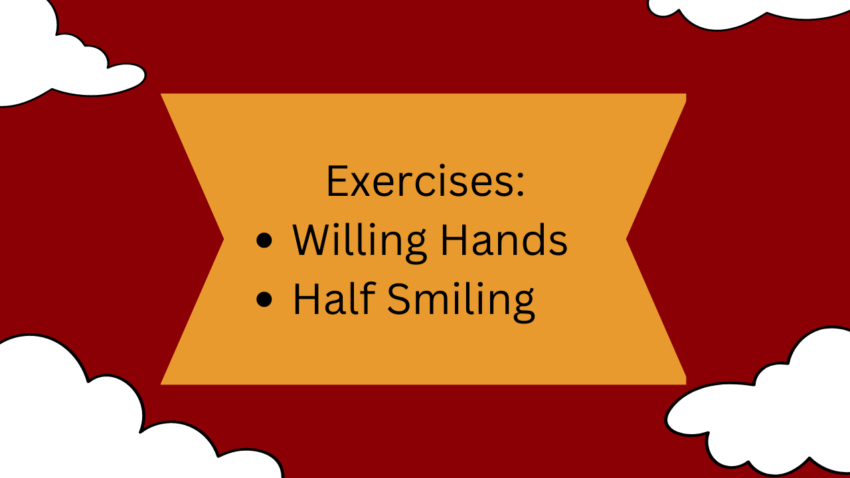In the latest UpRoryUs video, I covered the Willing Hands and Half Smiling exercises. Read on to learn how to use these exercises, how they work, and where they come from.
Willing Hands
The willing hands exercise is simply opening your hands, relaxing your hands (including wrists, arms, and shoulders when possible), and allowing that gesture to send messages of calm to your brain. This exercise can be practiced while sitting or standing.
Half Smiling
The Half Smiling exercise is equally simple. To use this exercise, you lift the corners of your lips just enough to feel the difference. Usually, the difference isn’t directly visible to others.
When to Use
These skills are meant to be used when you are experiencing fear or anger, including the many emotions that fall under those categories, such as jealousy, anxiety, and countless others. Critically, these skills are meant to help when those emotions are not an appropriate response to the situation. You should not use these skills to please others, unless that happens to align with your own needs.
The Science:
An easy way to share the mechanism of these exercises is to discuss the cortical homunculus, as pictured below.

By Mpj29 – Own work, CC BY-SA 4.0
In this representation, you can see that certain body parts are considerably larger than others. This is because the Cortical Homunculus depicts the number of nerves connected to each body part. Notably, the hands and lips are greatly exaggerated, and both Willing Hands and Half Smiling take advantage of this concentration of nerves. By changing how we hold our hands or the expression on our face, we send simple messages to our brain that are most easily described as calm, peace, safety, or comfort.
How to Make the Most of the Exercises:
With both of these exercises, it’s important to practice them in many circumstances so your brain will build pathways that make the exercises more easy to use when you’re in need of regulating a strong emotional response. You should practice these skills when it’s quiet and when it’s loud, when you’re alone and when you have company, and so on.
For Willing Hands, consider the circumstances that have you gripping things in your hand, such as tools and cell phones. When you can relax your hands in those situations, or just take breaks, you can improve the amount of positive signals you’re sending to your brain.
For Half Smiling, it’s important to note that you should avoid awkwardly smiling or grimacing. Keep the smile small. This is because too much tension sends our brain signals of discomfort. A good rule of thumb is that a full smile should only happen when you’re happy. The Half Smile should stay smaller in order to avoid this trap. Remember, if someone can instantly tell when you’re practicing, you’re probably smithing, not half-smiling.
More Resources:
Marsha Linehan, PhD, brought Willing Hands to the scientific community while creating Dialectical Behavioral Therapy. You can see her explanation of this skill in the video below.
I hope the Willing Hands and Half Smiling skills are helpful to you. You can follow this blog or subscribe on YouTube if you want updates when I publish new content, typically on Mondays.

